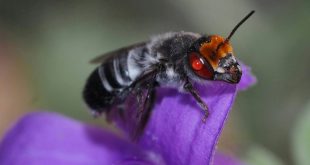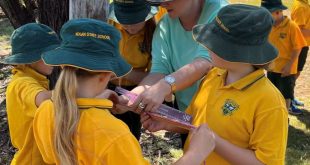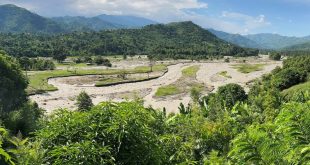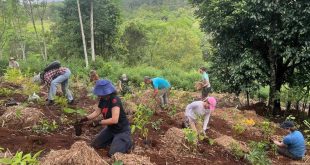
Anastasia Vickers, a Ngadjuri Woman, Western Sydney University student and native garden consultant (left) with Blaxland High School students Reggie (middle) and Izzy (right) who helped plant some of the native species.
Story and photos by Ben Skinner
Led by First Nations students and community, Blaxland High School has established a native food garden and students are using crops grown in the garden as ingredients in food technology classes. The school received injections of expertise from many quarters, including an Aboriginal-owned social enterprise, to learn about and embrace the use of native plants for cooking and sustainability.
Key Points:
- Blaxland High has introduced a native food garden on the school grounds.
- The ingredients from the crops are used in food technology classes.
- It took a collaborative effort from the school, consultants such as Anastasia Vickers from Western Sydney University, Food Futures and EM-power Foundation to make this happen.
Only a stone’s throw from the food tech classrooms at Blaxland High, a collection of native plants are ready to pick. Students harvest the traditional ingredients and add them to their dishes. It doesn’t get any fresher than that!
The native food garden program was embraced by school principal Emma Le Marquand and supervised by Anastasia Vickers, a student at Western Sydney University who is completing an Advanced Bachelor of Food Science. With assistance from Aboriginal-owned social enterprise Bush to Bowl and Food Futures Company, dozens of native species were planted in various locations around the school.
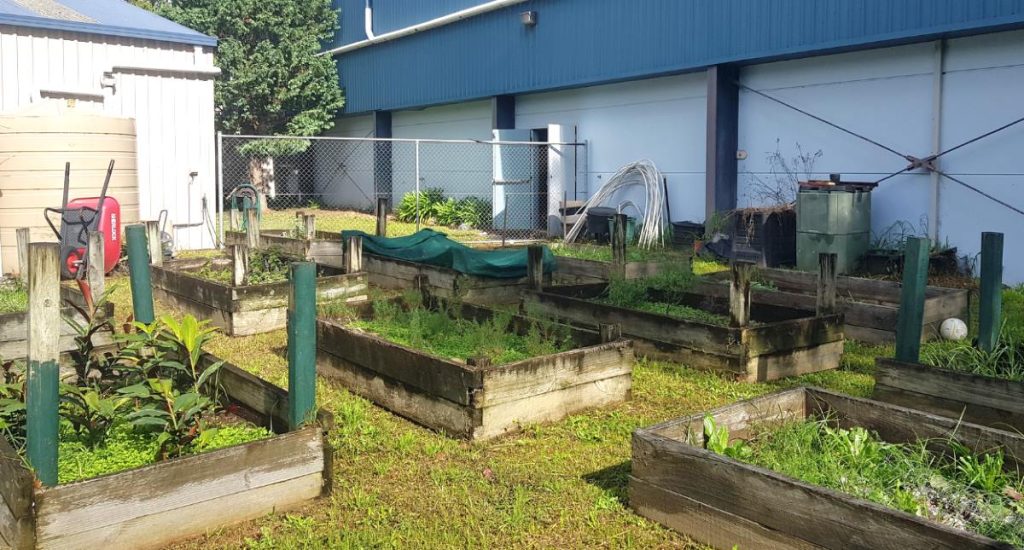
One of the areas where the native crops were planted within the school, using previously under-utilised garden beds.
Over 30 students were involved in planting on the day in March 2024, with local Aboriginal elders in attendance.
Signs providing information about the native plants were made by the school’s industrial technology department and guided by First Nations Food Companion, a book by Damien Coulthard and Rebecca Sullivan.
The program made use of the previously under-utilised garden beds that were constructed in years past. Native plants included “Goongum” (plum pine), “Panaryle” (River Mint), Warrigal (like Spinach) and Tyulern (saltbush). (NB. Native plant names vary depending on whose Country they’re on.)
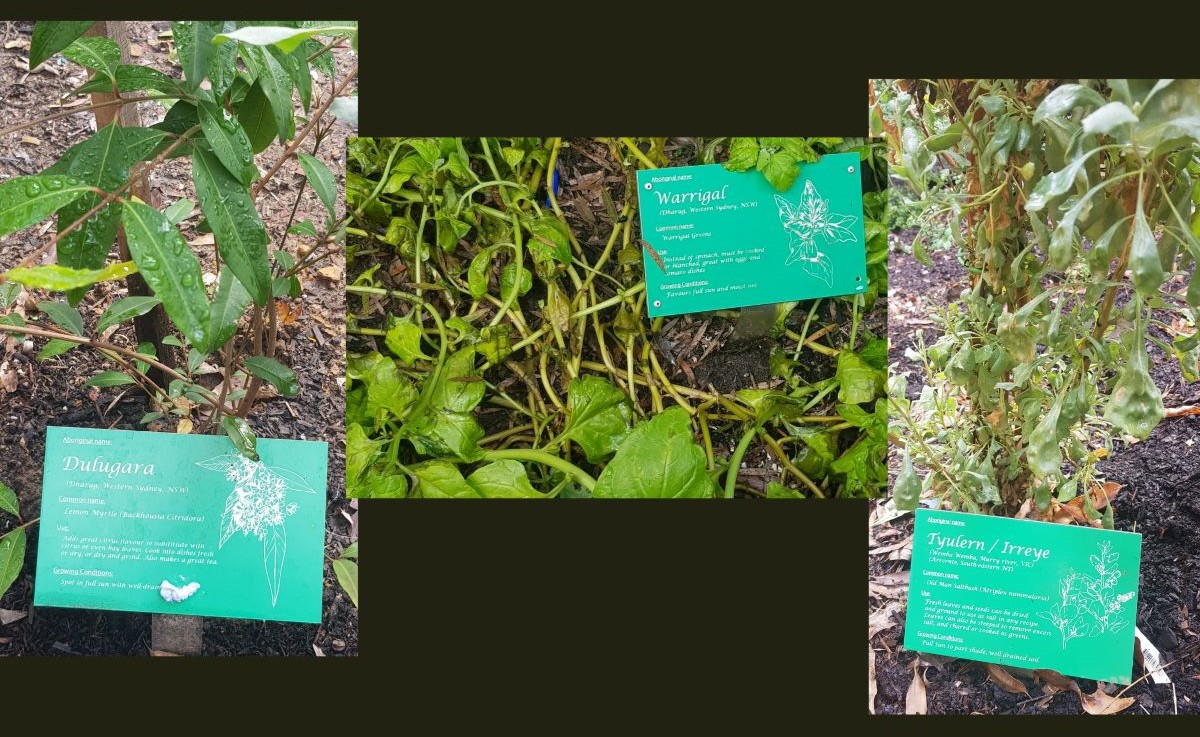
Some of the native plant species with associated signs made by Blaxland High School industrial technology department. These traditional plant names have been researched and collated from First Nations authors and online resources.
It appeared to be a great learning experience for all involved.
Anastasia says the program inspired students to make a real change in the world.
“Native foods have relevance across any career the students are interested in,” she says. “Community members and students had the opportunity to learn together, led by Culture in a genuine way.”
Food technology teacher Megan Backers says you often have to adjust your techniques when cooking native ingredients compared to working with the produce bought in supermarkets.
School principal Emma Le Marquand collaborated with the Food Futures Company and EM-power Foundation who led the native garden program.
“This invaluable program has provided students with hands-on, real-world experience in a range of curriculum areas as well as developing the confidence and knowledge of our committed teaching staff,” says Principal Le Marquand.
The plants are often very powerful flavour-wise: a nibble of native thyme is reminiscent of some toothpastes, while rubbing together native citrus leaves brings out a potent aroma.
Principal Le Marquand mentioned that it’s important for students to learn about our natural heritage to understand how to live sustainably. Native crops tend to be hardier than crops originating from other countries too.
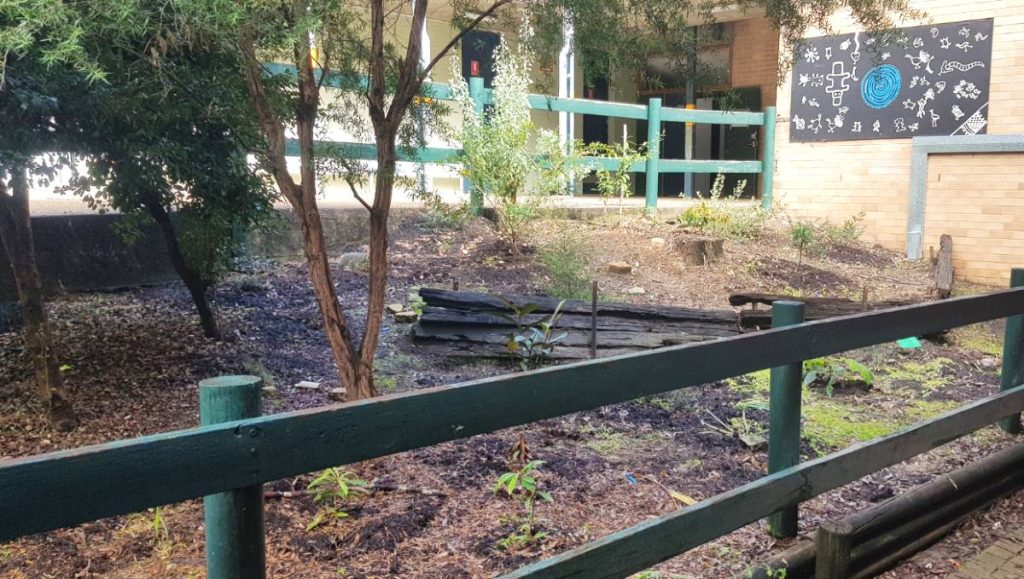
Previously unused areas within the school are now productive native food gardens.
The gardens are maintained about once per week, requiring some weeding. Mulch will help with reducing that workload.
None of the learnings about the native plants came from the NSW Department of Education syllabus. It was a collaborative effort from the parties involved to figure out how best to deliver the program.
The native garden is just the first step in a long-term learning experience about how to incorporate native ingredients across the curriculum.
Teacher Megan Backers welcomes the move for new First Nations-related units to be introduced in the 2026 food tech syllabus. Ingredients are already being used in recipes and will also be used in STEM/Science-related experiments.
We acknowledge the Traditional Custodians of the Lower Mountains and pay our respects to Elders past, present and emerging as we live, work and play on Dharug and Gundungurra Country (Ngurra).
Take Action:
- Check out the First Nations Food Companion book by Damien Coulthard and Rebecca Sullivan which proved very useful to the school in providing information on native plants.
- Experiment with native crops in your garden like Blaxland High has done. Visit local native nurseries which supply them.
- Consider engaging Bush to Bowl, Food Futures Company and EM-power Foundation to get a similar project up and running in your area.
